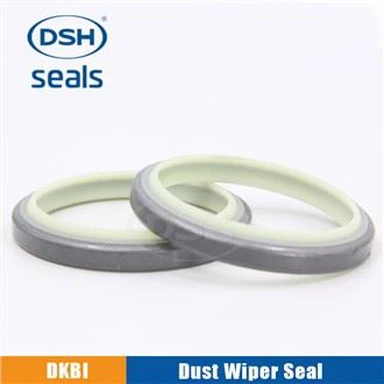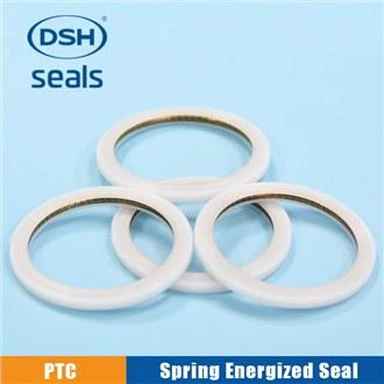The sealing mechanism of the screw seal
Nov 02, 2022
The spiral seal has a spiral groove on the shaft surface and a light surface on the hole, which is the same as the groove of the labyrinth seal, so the spiral seal can be considered as a special type of labyrinth seal, called spiral labyrinth. However, the teeth of the spiral labyrinth are continuous, unlike the teeth of the various labyrinths mentioned above, which are continuous teeth. Due to the continuity of the teeth, the flow state of the medium through the teeth changes. The spiral groove is no longer used as an expansion chamber to generate vortices to consume flow energy, but as a propulsion device to exchange energy with the medium, generating the so-called "pumping action" and generating a pumping head that balances with the pressure of the sealed medium, i.e., the pressure difference p=0, thus preventing leakage. Therefore, the sealing mechanism is slightly different from that of the labyrinth seal.
However, when the medium passes through the gap, a part of it crosses the top of the teeth and does not flow along the groove, i.e. there is a permeability effect, which is the same as in the labyrinth seal.
The sealing mechanism of the spiral seal is slightly different according to the spiral structure.
Single-section spiral, which uses the principle of spiral rod pump, uses the pumping action of the spiral to push back the medium along the leakage gap to achieve sealing. It is suitable for sealing liquid or gas-liquid mixture without external sealing liquid, and is often used for sealing oil in bearings. It must be noted that the direction of the spiral drive oil needs to be opposite to the direction of oil leakage, otherwise, not only can not achieve sealing, but will lead to a sharp increase in the amount of leakage.
The two spirals with opposite direction of rotation squeeze the sealing fluid to the middle to form a liquid seal. The pressure of the liquid seal is slightly greater than or equal to the pressure of the medium being sealed, that is, it can achieve sealing. It is often used for sealing gas or vacuum.
The two spirals with opposite rotational frequency expel the gas to both sides to form a high vacuum trap in the middle to achieve the seal. This type of seal can be used as a vacuum seal.
Theoretically, the smaller the clearance of the spiral seal, the better it is for ensuring the seal. If the clearance is large, the liquid medium cannot adhere to the surface of the shaft at the same time. Assuming that the liquid medium is only attached to the bore wall and separated from the shaft, the spiral seal will not be able to push out the medium, i.e. the seal will fail. However, if the gap is too small, it is afraid that the shaft and the hole wall will touch each other. In order to avoid friction and wear of the sealed metal coupling, a layer of graphite can be applied to the surface of the hole wall.
Labyrinth spiral seal
The labyrinth spiral seal was used in industry not long ago. It differs from the spiral seal in that the spiral groove is turned on the surface of the shaft and the screw sleeve is turned on the hole of the seal, and the thread rotation is opposite to that of the shaft, so that the flow between the shaft and the screw sleeve forms a strong turbulent flow. In addition, the spiral movement speed of labyrinth spiral seal is higher than that of screw seal, and it is used for low viscosity liquid in turbulent flow condition. The spiral seal is generally used for large viscosity liquids (such as liquids with viscosity greater than water) under laminar flow conditions.
Working principle: In the working space between the screw and the sleeve, the liquid is located in a number of honeycomb spaces enclosed by the two tooth surfaces of the sleeve and the two tooth surfaces of the screw. The gap between the surface of the screw and the sleeve is in the form of an annular column surface with grooves. Liquid through these threads when the formation of vortex, the direction of the opposite direction of outflow. As a result of the momentum exchange of the screw around the flowing liquid, the screw transfers energy to the liquid. The screw and sleeve interact with the liquid and the result is friction on the nominally divided surface through the gap between the screw and the sleeve. The friction generated in the liquid then generates pressure between the screw and the sleeve.







